If you have Slovak ancestry and are curious about what Slovakia was like before your ancestors came to the US, why they might have come, and how to trace your Slovak roots, you have come to the right place. I became interested in Slovakia when learning about my own Slovak roots, and I wrote this post to share what I’ve learned with you.
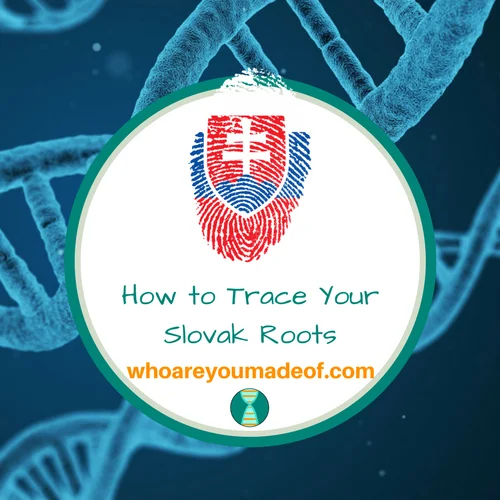
In this article, I’ll discuss:
- Briefly, a history of Slovakia before the mass immigration to the United States began
- Why many Slovaks decided to make the difficult decision to leave their homeland
- Other places where Slovaks settled (apart from the US)
- A bit about Slovaks in the United States
- How to trace your Slovak roots, including how Slovak would appear on a DNA test
Note: I grew up saying that my grandfather’s ancestors were from Czechoslovakia, which is actually kind of strange, since when my ancestors left Myjava, Slovakia, there was no such place as Czechoslovakia. It was called the “Austro-Hungarian Empire”.
I’ll talk more about this later on in this post, but I wanted to mention it at the beginning. If you have been told that your ancestors came from Czechoslovakia, it’s possible that where they are from is actually now the Czech Republic – close, but not exactly the same.
Brief history of Slovakia before immigration began to the United States
Slovakia has had a complicated history! In fact, until 1993 there was no such thing as a completely independent and sovereign Slovakia. For almost 1000 years, Slovakia was consistently under rule by a neighboring empire, country, or distant political power:
- Slovakia was a part of the Kingdom of Hungary from 1000-1824 (two different Kingdoms of Hungary)
- From 1804-1867, Slovakia was a part of the Austrian Empire
- During 1867-1918, Slovakia became integrated with the Austro-Hungarian Empire
- From 1918-1939, Slovakia was a member of the first and second Czechoslovak Republics, which was basically a combination of the ethnic Slovak and Czech regions
- Briefly (1939-1945) Slovakia had “independence” under a new status as a client state of Nazi Germany, which meant that they were still dominated by a more powerful nearby political power
- Also briefly (1945-1948), there was a third Czechoslovak Republic, but this ended in 1948 after a coup d’état by the Communist Party of Czechoslovakia
- The communists ruled from 1948-1990, during which time Slovakia was basically a satellite state of the Soviet Union, which bordered Slovakia to the east, since the Soviet Ukraine was within the borders of the Soviet Union.
- The Czech and Slovak experiment continued from 1900-1993 with the Czech and Slovak Federative Republic
- A peaceful division (that was not without debate) resulted in the formation of Slovenská republik, or in English, Slovakia, or the Slovak Republic, in 1993
Even though Slovakia was always ruled by another foreign power or entity, Slovaks still managed to keep their language and culture very much alive, and this is apparent in the way that the immigrants to the United States taught their children and grandchildren about their culture, through language, food, and other traditions.
Note: The number of Slovaks killed during World War II is not commonly discussed. More than 200 mass graves have been discovered in Slovakia. More than 25,000 Czechoslovak soldiers died during fighting, along with 320,000 civilians. Additionally, 277,000 civilians of Czechoslovakia died from the Holocaust – more than half of Slovak Jews were murdered. These atrocities affected almost every Slovak family, even those who had family members living overseas. For example, my great-great grandfather’s nephew and his son were killed by the Nazis during the Slovak National Uprising.
Main reasons for leaving Slovakia
My mother’s great-grandparents left their home in Brezová pod Bradlom, Myjava, Slovakia in 1894, and they never looked back. Even though, based on what I’ve read in family stories, I think that my great-great grandfather struggled to adjust to his new life in America, they raised their seven children as best they could, and ended with dozens upon dozens of grandchildren, great-grandchildren, great-great-great grandchildren.
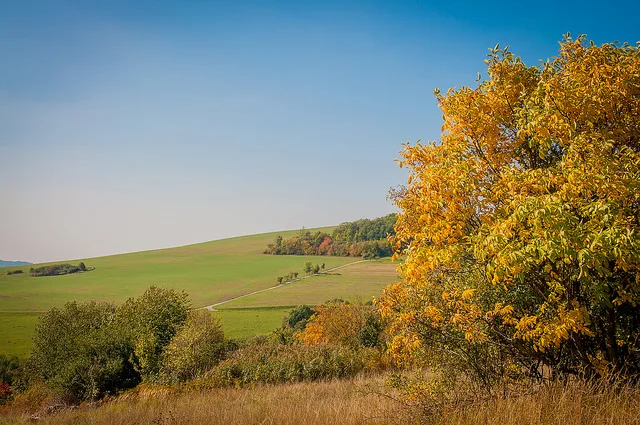
I can’t begin to imagine the difficulties that they faced on their trip, the hard choices that they must have had to make, or how they imagined that their lives in the United States might be. I am forever grateful for their sacrifice, and the sacrifice of all of my ancestors who made the tough choice to leave their homeland and every day I work towards making sure that their sacrifice was worth it.
Imagine how surprised my great-great grandparents would be to see how Slovakia has developed in the past 125 years – the image below is in the center of the town where my ancestors lived, which by all accounts was just a tiny, rural town where the majority of the residents earned their living in farming. It’s so beautiful and looks like how I imagine many other small towns across Europe look today – wonderful:
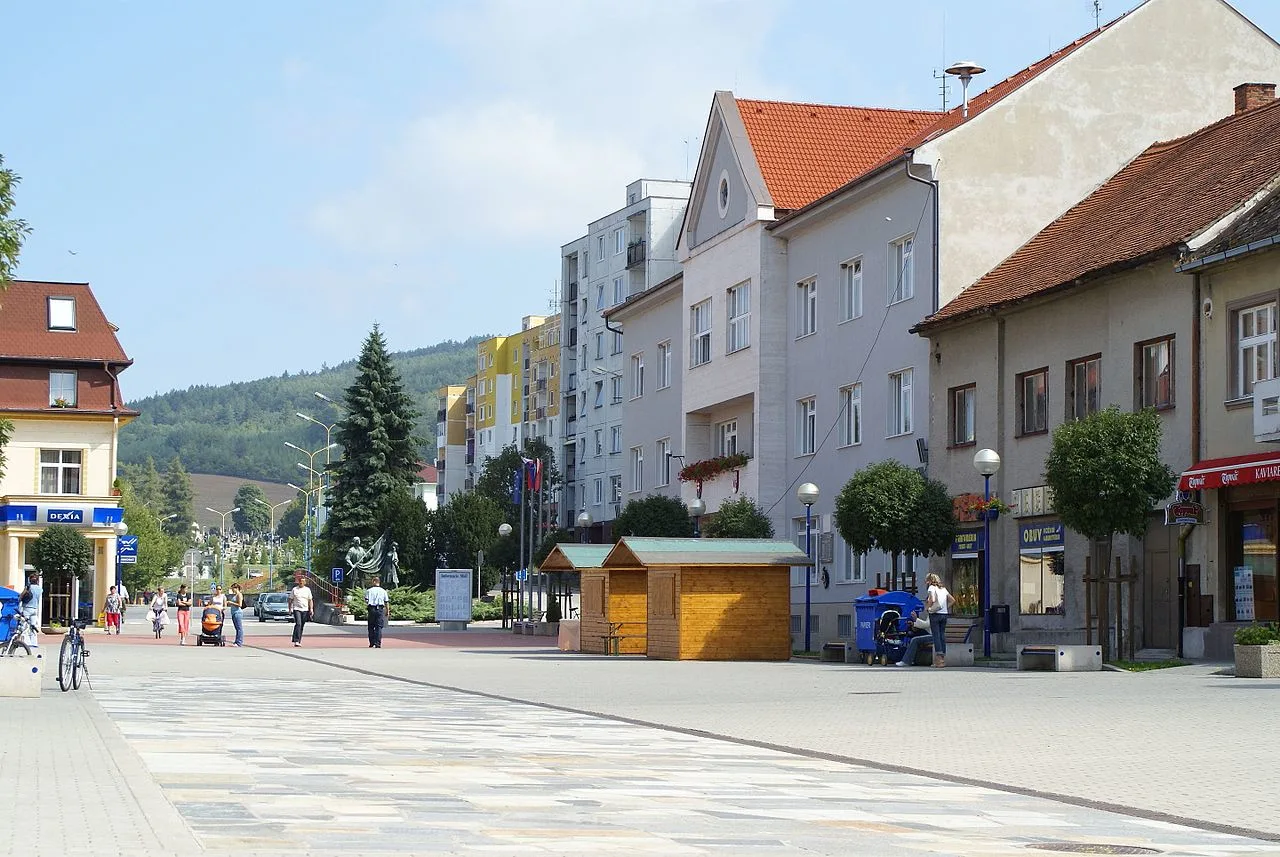
If you see the modern photographs above and wonder why someone would ever want to leave such a beautiful place. Hundreds of thousands of Slovaks left their homeland because of extremely poor economic conditions and political oppression.
Despite the fact that the Slovaks had been struggling for political independence for almost a thousand years, in the late 1800’s, they found themselves in a worse position than ever before.
The Austria-Hungary empire was not tolerant of the Slovak desire to maintain their language and culture, and the Hungarian side of the empire nationalized schools, closed Slovak-language newspapers, and jailed many Slovak “nationalists”.
My great-great grandparents left Slovakia in 1894, right in the middle of biggest wave of migration from Slovakia to the United States. From 1870 – 1910 more than 650,000 people from what would become Slovakia left their beautiful, yet impoverished, country in search of a better life for themselves and their families in the United States.
Individual families left for different reasons. For example, my great-great grandfather might have been tempted by the idea of a relatively high-paying mill job in Massachusetts, just like his fellow “Myjavans” who were tempted to find factory work in Little Falls, New York.
Which part of Slovakia were most immigrants to the United States from?
About 75% of the immigrants from Slovakia to America were from only four Slovak “counties”: Spis, Saris, Zemplin, and Abov. These counties were located in the east of the country, but since political divisions, administrations, and sometimes even names, have changed, if your ancestors came from these areas, you might different names associated with their hometowns.
Generally, the name of the town is the same, but the administrative region (okresy) might be called something else.
The takeaway is that if you are Slovak American and you want to learn more about where your ancestors might have come from, you should know that most of us will have ancestors from the eastern part of Slovakia.
Even so, there were more than 150,000 immigrants from other parts of Slovakia, which is something to keep in mind if you don’t find evidence that your relatives were from the east.
It’s also important to know that each administrative region is divided into districts. For example, my great-great grandparents were from the town of Brezova Pod.
This small town has always been in the district of Myjava, which is in the modern administrative region of Trenčín. This “okresy” was established in 1996, so my ancestors would not have been familiar with it at all!
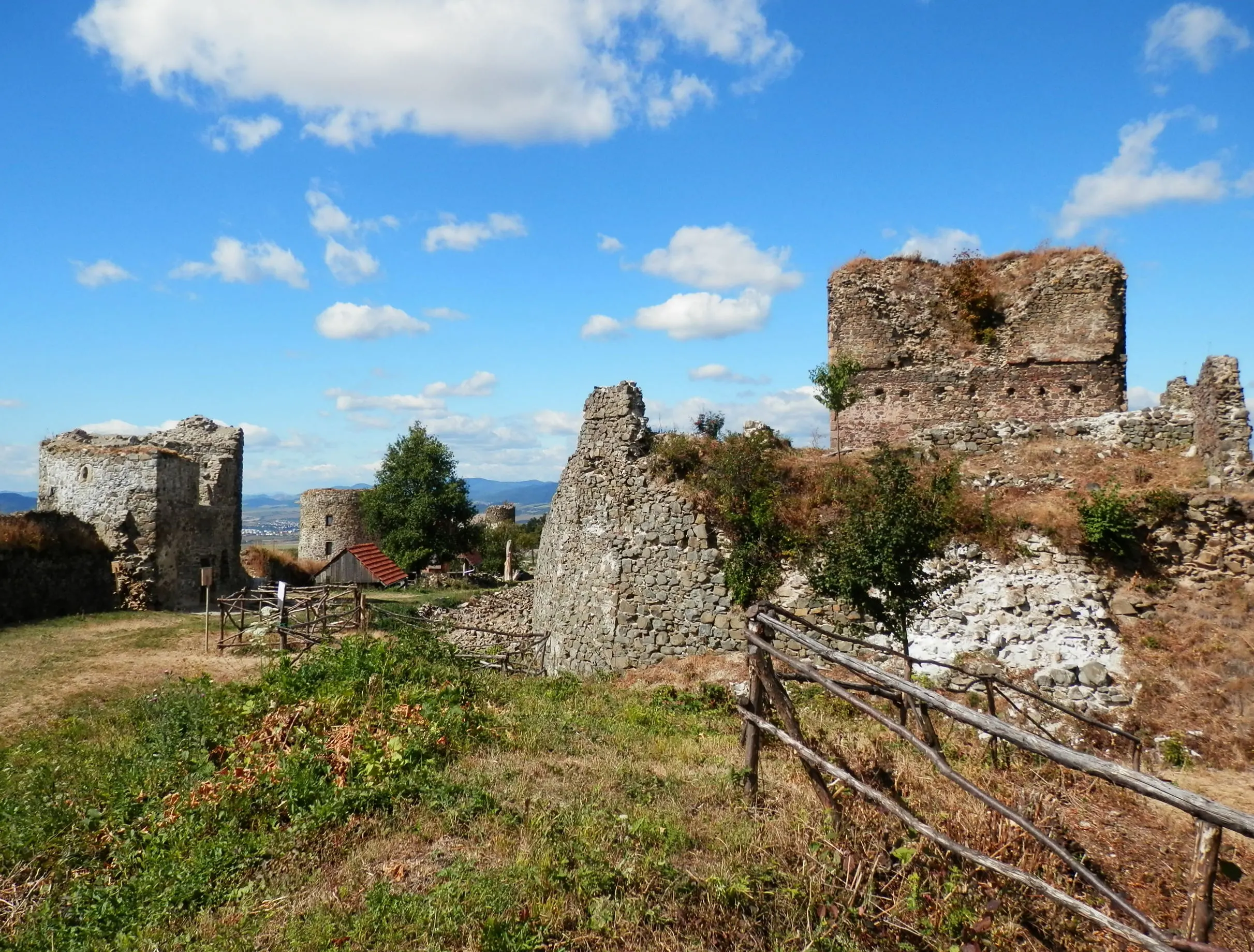
Did you know that many Slovaks went to other places in Europe and around the world?
Because of the oppression that Slovaks experienced under various foreign rulers, many of them chose to leave the country well before the 1890s, and while a few did settle in the United States, most ended up forming new Slovak communities in other European countries.
For example, about 200,000 Slovaks left Slovakia during the 1700’s and 1800’s and went to what is now Serbia. Most of them settled in two regions: Banat and Backa, Serbia.
This history came alive to me via a DNA match that I saw last year. I saw that this DNA match was Serbia, which struck me as odd, since I did not have any Serbian ancestry. As it turns out, his family lives in one of those two Serbian regions where Slovaks established communities.
We are still working on determining our exact connection, but it seems clear that our common ancestor was back in Slovakia, and his line went to Serbia, and mine went to the United States.
Other Slovaks left for places like Australia, Mexico, and Canada. This means that anyone with Slovak ancestors might have cousins living all over the world – how cool is that?
What did Slovaks do once they got to America?
The 1890s immigration process Slovaks encountered
When our Slovak ancestors decided to come to America, most of them were fortunate that we had relaxed immigration laws compared to those they would find today. If they could pay a head tax of fifty cents for each person, and show that they were not an “idiot, lunatic, convict” or a person who was “likely to become a public charge”, then they were generally allowed entry into the United States.
They were not typically required to provide documentation of any sort during the 29-question survey they were given. They were also required to pass a physical inspection which looked for signs of disease or mental illness.
If they passed their inspection, which generally only took a few hours, they were free to leave the inspection station and move on to wherever it was that they had planned to go. Some already had family here, and knew how to get in touch with someone who could help them arrive at their final destination. Others stayed in the New York City/ New Jersey area where there were newly-established Slovak communities and they could find support for finding jobs and lodging.
How Slovaks established themselves
For our Slovak immigrant ancestors, finding a community of people who spoke the same language and understood their cultural traditions was key to their success, and indirectly, the success of their children, and grandchildren, great-grandchildren, and even great-great grandchildren.
My great-great grandfather initially settled in Holyoke, Massachusetts, to work in a mill. He stayed there a few years – long enough for my great-grandfather to be born there. He must have heard that there were great opportunities in Newark, New Jersey – perhaps from his brother-in-law, who was already living there with his family, because he moved there, eventually bought a house, and never left.
Life was pretty difficult for most Slovak immigrants once they got to America. It was similar to the experience that most impoverished economic immigrants have.
While many Slovaks immigrants learned to speak English, some struggled with communicating. Wages were generally very low, which meant that many times their children were encouraged to leave school while they were teenagers and help support the family.
My own great-grandfather was working as a laborer when he was 16 years old, helping to support his parents and siblings.
How Slovaks found success in America
Through a lot of very hard work, and support given to them by their local Slovak communities, many Slovak families achieved a nice amount of success in the United States in many fields. You can see a partial list of some notable Slovak Americans here.
Success is subjective, however, and I like to imagine that all of the descendants of these Slovak immigrants have achieved some measure of success – and we are certainly fortunate to have the opportunity to grow up in the United States – a dream that many have, but few can attain.
How to begin tracing Slovak ancestry
If you are interested in tracing your family’s Slovak ancestry, the first thing that I would recommend that you do is start building your family tree. You will start by talking to your parents, older siblings, aunts, uncles, grandparents, and cousins.
Take notes, and ask them to tell you anything that they can remember about their parents, grandparents, and even great-grandparents, if possible.
I recommend putting everything that you learn into a family tree software or website. Ancestry is great for this, since you can also search for records easily alongside of your family tree (and if you decide to test your DNA, it is all connected, too!).
- Slovak names are often misspelled by census takers. This requires you to be a little creative when searching through possible matches.
- On one census, your ancestor might be from Hungary, and then from Russia, Austria, or Czechoslovakia on another. Don’t worry about these discrepancies. If you recall from the brief history at the beginning of this post, Slovakia was never really an independent country until very recently, and it switched names and rulers frequently, especially during the time when our great-grandparents and great-great grandparents were living.
- Don’t just look at the description of the census record. Taking a good look at the actual entire census entry will give you a wealth of information about your Slovak ancestors. you might even find that your great-great grandfather eventually brought his mother to live with him in the United States and learn her name and approximate date of birth. All of this information is absolutely invaluable when trying to trace records in another country.
Once you feel like you have found all of the records pertaining to your ancestors from within the United States, it is time to start looking for Slovak records.
Fortunately, those of us with Slovak ancestors can have very good luck finding baptismal records on Familysearch.org. You have to create a free account to be able to use the site.
Can you do a DNA test to trace Slovak roots?
A DNA test is a fantastic way to trace your family history, no matter where your ancestors are from. I have had very good luck connecting with family members on my Slovak line of the family, and they have been very helpful in providing information and background to our family’s history.
Slovak ancestry generally – depending on which testing company you decide to use – shows up in the more general “Eastern European” category on the ethnicity results portion of the DNA tests, but don’t feel discouraged by this.
It is just one aspect of using DNA to trace your Slovak ancestry, and I promise that you will find much more value in your DNA matches.
With that said, Ancestry DNA has more specific sub-regions, and those of us with a lot of Slovak ancestry might show DNA that matches with the “Poland, Slovakia, Hungary and Romania” sub-regions of Eastern Europe.
- If you are interested in purchasing a DNA test to assist you with your family tree research, you can use the follow link (once again, I will receive a very small commission at no extra cost you):
Discovery the story AncestryDNA® can tell
Once you do your test, don’t forget to come back to my site here because most of my articles are about how to understand your DNA results, and how to use your DNA to research your family.
Conclusion
I hope that you enjoyed this post, and learned a little bit about Slovak history, why it is connected to the reasons your ancestors left Slovakia, and how to go about tracing your Slovak roots. If you have any questions or would just like to add your own family story or Slovak genealogy experience, I would love to hear from you in the comments.
Thank you for stopping by! Pekný deň prajem!
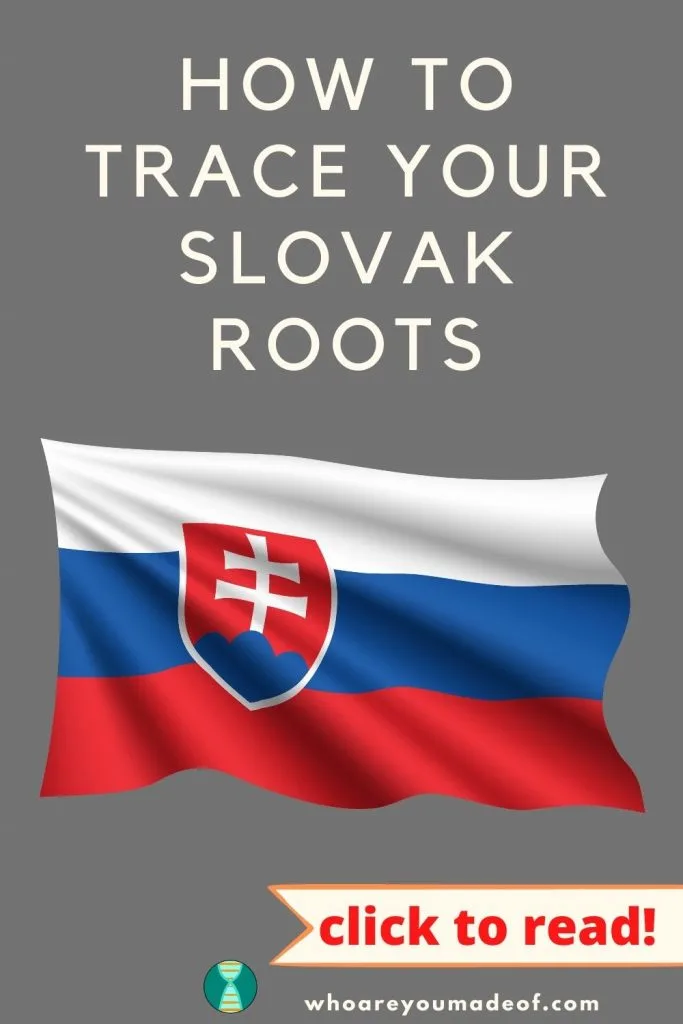


Joe
Thursday 29th of July 2021
Hello Marcedes,
My grandmother recently passed away and always told us that we were of royalty in Slovakia with the surnames barlick and Olsavsky . It’s almost impossible to track down any of our ancestors since she passed . We always wondered if the stores of the old village were true…..
Steve
Tuesday 11th of May 2021
Hello Marcedes, I just would like to add a few thoughts to your note. The area that you call Slovakia was called Hungary until 1918 - the idea of Slovakia had not even existed before that date. Talking about Slovakia in the Middle Ages is a nonsense - it’s just like talking about the United States (exists since 1776) in the times of Pharaohs. The name Slovakia simply did not exist before 1918. Having said that, the area of present day Slovakia has always been multiethnic. Even today there is around a dozen different ethnicities that compose the population of Slovakia. The historical circumstance of the creation of a new country called Slovakia was that in January 1918 Czech and Italian soldiers entered into the territory of Hungary. The Czech solders occupied a large area in the North where they created an Entente puppet state called Slovakia - which then formed a union with the Czech Republic and became what we know as Czechoslovakia. I write “puppet state” because the population of this area had never been asked and the Slovaks being mostly present in villages did not even have a capital. The Czech military under Italian command (under the command of the Italian general Barraca) occupied the ancient Hungarian capital of Pozsony (in German Pressburg) where the population was 81% ethnic German and Hungarian and only 15% ethnic Slovak. The Czechoslovak government renamed this German/Hungarian city to Wilsonovo Mesto (Wilson’s Town, with reference to the US President Wilson) in 1919. This later became Bratislava (meaning Slavic brother). Later the German and Hungarian 81% majority was gradually expelled from Bratislava by the Czechoslovak administration and the last original Hungarian and German inhabitants of the city were forced into a concentration camp set up by Czechoslovak government under the Freemason President Benes in the village next to Bratislava called Petrzalka in April 1945. Around 40% of the newly established Slovakia’s population was Hungarian and German in 1918. They were mostly expelled and deported with their family between 1945-48 by the Czechoslovaks. Having said that, there is a very high chance that - if your ancestors are from the territory of present day Slovakia - they might have had no ethnic relations to Slovaks. They could have been ethnic Germans or Hungarians (there is a 40% chance for this). The area of present day Slovakia has always been an ethnically very very colourful area: the mining towns inhabited by Saxons, the lowlands by Hungarians, the mountain valleys by Slavic people. In the Middle Ages (13th to 15th century) French, Italian, Vallon, Flemish settlers were invited in this area by several Hungarian kings - and there were also Poles, Rutenians, Jews, Gypsies, etc. etc. in a number of villages and towns. The history of this area is very complex and complicated. A large part of the birth certificates back to the Middle Ages now can now be found digitalised on the internet so it is very likely that you will find more data on your ancestors. Good luck with further discoveries and come to visit our region to get more personal experiences - I am sure you will like travelling on the land of your ancestors!
jasmine allen
Sunday 28th of February 2021
my great grandmother came from myjava as well. She and my great great grandparents imigrated in the early 1900's to chicago. we always were told we were czech so it was so interesting to find out we were actually from slovakia.
Mercedes
Sunday 28th of February 2021
Hi Jasmine, That's so amazing - our ancestors were neighbors! My ancestors lived in Tura Luka and surrounding areas. Best of luck to you learning more about your Slovak roots. Sincerely, Mercedes